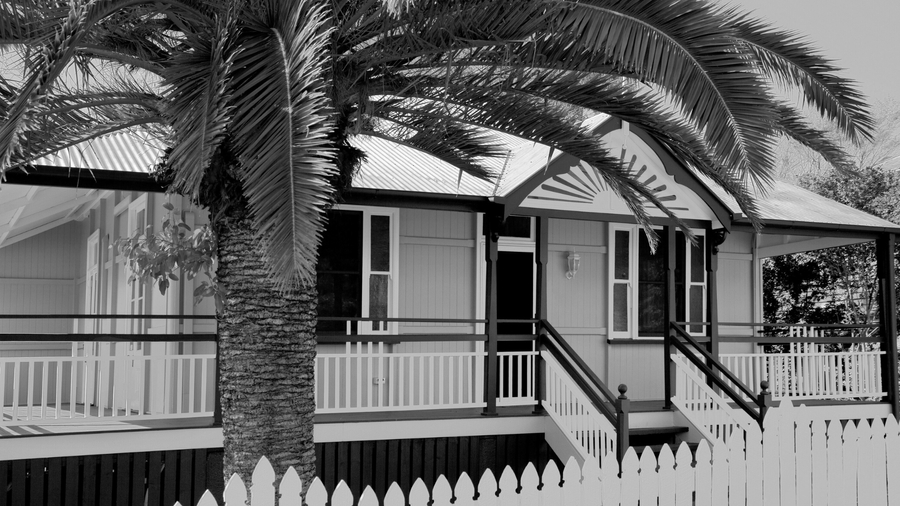Wealth Street Journal: Week 14, 2024
03 April 2024
This week in property: Top 5 headlines
Discover the latest insights shaping the Australian real estate market, from surging property values and shrinking land sizes to predicted interest rate cuts and debates over early super access for homebuyers:
- 90% of property markets rise: Nearly 90% of Australian property markets experienced value surges, with a national dwelling value increase of 8.9% in the past year.
- Price per square metre rising: Rising prices per square metre accompany shrinking land sizes, impacting housing affordability and ownership opportunities.
- Rate cuts predicted: Predicted interest rate cuts could save homeowners up to $700 monthly by 2026, enhancing affordability and boosting credit availability.
- Listings on the rise: Property listings are up by 16.6%, driven by strong markets in Sydney, Melbourne and Canberra, though they’ve declined in Darwin.
- Super for homes not-so-super: The Superannuation industry opposes early access to retirement savings for home purchases, fearing it may inflate house prices without aiding lower-income buyers.
90% of property markets rise
In the past 12 months, values have surged in nearly 90% of house and unit markets across Australia.
CoreLogic’s analysis reveals a national dwelling value increase of 8.9%, equivalent to approximately $63,000 based on the median dwelling value of $765,762.
Out of the 4,625 markets analysed, 88.4% (4,087) experienced growth—a significant rise compared to just two years ago (February 2023) when only 39.1% increased.
CoreLogic Economist, Kaytlin Ezzy, attributes this surge to the imbalance between supply and demand, resulting in broad-based capital gains.
“Despite three rate hikes, worsening affordability, and the rising cost of living, the increasingly entrenched undersupply in housing stock, and above average demand thanks to strong net migration, has helped push values higher,” she says.
Brisbane witnessed growth in every house and unit market, while in Perth, 100% of unit markets and 99.7% of house markets saw increases. Similarly, Adelaide saw increases in 99.7% of unit markets and 98.6% of house markets, Sydney recorded growth in 98.6% of houses and 97.1% of units and Melbourne experienced increases in 90.3% of houses and 81.9% of units.
Price per square metre rising
According to Domain’s latest Price Square Metre Report, properties are shrinking as the price per square metre rises.
The report highlights an upward trend in house and unit prices per square metre in capital cities over the past year.
Dr. Nicola Powell, Domain’s Chief of Research and Economics, notes that as the price per square metre increases, average land lot sizes are decreasing to maintain affordability.
She explains, “the report reveals a trend of shrinking land sizes attributed to densification and rising land premiums. While this may seem counterintuitive, it actually creates more opportunities for home ownership (as) higher density translates to increased affordability.”
Without the shift towards greater density and smaller land sizes over the past two decades, house prices would be significantly higher today—by 44% in Perth, 16% in Adelaide and 14% in Melbourne.
The report indicates a 14% increase in price per square metre in Perth over the past 12 months, 9.6% in Adelaide, 7.5% in Brisbane, 5.1% in Sydney and 0.8% in Melbourne. However, it has dropped by 2% in Canberra, -2.3% in Darwin and -2.7% in Hobart.
Rate cuts predicted
Homeowners could see a monthly saving of nearly $700 by the end of 2026 if anticipated interest rate cuts materialise, according to BIS Oxford Economics.
Predictions suggest a potential 1.75 percentage point drop in the cash rate within the next 18 months, leaving more money in homeowners’ wallets and increasing borrowing capacity for prospective buyers. The first rate cut is expected in December this year.
Based on the average Australian home loan of $624,000, monthly repayments could decrease from $4,003 to $3,310, translating to approximately $8,300 annually.
“Interest rate cuts from late 2024 should boost credit availability, accelerating broad price growth once again,” senior economist, Maree Kilroy says.
She says higher borrowing costs in 2023 did not deter buyers.
“Underlying demand has been robust in many sectors, backed by the strongest population growth increment on record. Migration is running red hot but should soon normalise.”
Listings on the rise
Property listings show a welcome increase, rising by 16.6% compared to last year.
PropTrack data indicates a 22.2% surge in new listings across the combined capital cities in the year leading up to February, driven mainly by Sydney, Melbourne and Canberra markets.
However, listings have declined in Darwin and remained steady in Adelaide and Perth.
PropTrack senior economist Angus Moore believes sellers are confident in listing their homes because of the favourable conditions in the housing market.
“Sellers and buyers are more confident about the outlook for interest rates, with expectations of no more rate hikes and even cuts later in the year underpinning the confidence in the market,” he says.
With low unemployment and growing income, buyer demand is on the rise, especially amid the challenging rental market.
While the total number of properties listed for sale in Sydney, Melbourne, Canberra and Hobart surpasses the prior-decade average, Brisbane, Perth and Adelaide listings remain approximately 40% below.
Super for homes not-so-super
The Superannuation industry opposes proposals for first-home buyers to tap into their retirement savings early for property purchases.
According to a report from the Association of Superannuation Funds of Australia, such access would primarily benefit those already capable of buying homes without dipping into their super, potentially inflating house prices by boosting demand.
ASFA chief executive Mary Delahunty warns that this could exacerbate housing affordability issues for lower and moderate-income individuals.
However, Hotspotting founder Terry Ryder dismisses these concerns as self-serving, lacking empirical evidence to support claims of price escalation.
“The comments from big super are the voice of vested interest, always the biggest noise in real estate,” he said.
“Whenever anyone puts forward a proposal to help first-home buyers, there are claims it will push up property prices.
“But no one has ever produced any research to support that claim. I see this as a major furphy.”
Join our complimentary 2024 Property Market Update Webinar!
Wednesday 10th April 2024, 7:30PM AEST
- Expert insights: Bypass the media hype and get straight-from-the-source information on the current property market from Tim Lawless, Research Director at CoreLogic, Australia’s leading property market data provider.
- Market resilience: Key factors that influenced the property market last year and why economists and the big four banks are expecting property prices to surge in 2024.
- NRL legends share success: Be inspired by former Rabbitohs brothers George and Luke Burgess as they share their transition from the footy pitch to property.
- Insights from Wealth Street’s Head of Investment Strategy – Abdullah Popal: How you can grow your wealth using investment property as a vehicle.
This webinar is perfect for you if:
- You’re confused by the mixed messages about the property market.
- You want to understand the data behind the headlines.
- You’re looking to secure your family’s financial future and leave a legacy for your children.
Register for the webinar and stay ahead in the ever-changing property market landscape.
“Sellers and buyers are more confident about the outlook for interest rates, with expectations of no more rate hikes and even cuts later in the year underpinning the confidence in the market.”
Angus Moore
PropTrack Senior Economist
Get Started
Every success story starts with a leap of faith. Start a conversation with us.












